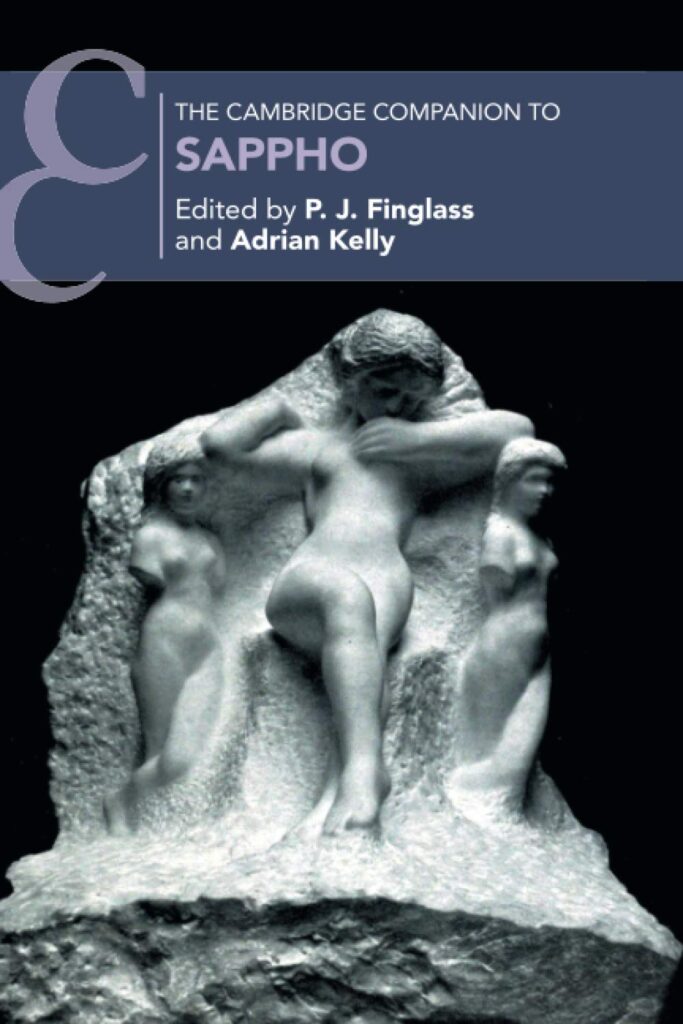
The Cambridge Companion to Sappho, P. J. Finglass and Adrian Kelly, Cambridge, 2021, 553 pages.
Thea S. Thorsen and Stephen Harrison, Roman Receptions of Sappho, Oxford 2019. 455 pages.
One would always like to expand the slender record we have of Sappho’s work. The few poems that remain intact, supplemented by some very evocative chunks, and a mass of inscrutable fragments, provide barely enough to assess her.
Sappho’s reputation alone is enough to pique our interest. So widely regarded as among the foremost Greek lyric poets, she came to bear the nickname of “the tenth muse.” For us, the appeal of Sappho is vastly amplified, since she is the only female poet of note who survives from classical antiquity.
Someone interested in Sappho will naturally look for a translation. There are three that immediately claim our attention. Mary Barnard’s 1958 “Sappho, a New Translation” is deservedly regarded as a classic. A classicist who was a friend of Pound, Williams and Marianne Moore, Barnard was not unworthy of the company she kept: her work is elegant and enjoyable as a freestanding work of modernist poetry. It is, however, reticent at best when it comes expressing the warmth of Sappho’s affection for other women.
Of more recent renderings, the two that command respect are Anne Carson’s 2002 “If Not, Winter: Fragments of Sappho,” which has the merit of including the Greek text. A few more poems, some of them significant, were found since then, so this work is not as complete as one would wish, but it is to be commended for its academic accuracy. Diane Raynor’s “Sappho, A New Translation of the Complete Works,” includes translations of the poems discovered a decade ago, so completeness is in its favor. The absence of the Greek text makes no real difference: anyone who really wants it can find it here, with vocabulary and grammatical notes, and text with all uncertainties indicated to a fare-thee-well. Raynor’s is perhaps a touch less literary in feel than Carson, but again, indispensable for getting a sense of “what’s really there.”
Proceeding to the reference works which are the proper subject of this review, both are outstanding. The Cambridge Companion covers her life, her literary style, the transmission of her work, and—what will be of most general interest—her influence on other poets in Greece, Rome, and the rest of the world (including Israel, China and Japan) up to the present day. We see how Sappho traveled east in the early twentieth century as an emblem of literary decadence, and how she made a comeback in the early twenty-first as a symbol of gay liberation.
As fascinating as all this is, it’s a bit like a magnificent frame to hold a missing portrait: the relative lack of Sappho’s own work makes this enormous apparatus seem a touch unwieldy. Also, it omits Sappho’s fate in the middle ages. There are traditions which state that works of classical literature, including the works of Sappho, were burned by at various times by church hierarchs in Rome and Constantinople. Though these accounts will not withstand detailed scrutiny, it cannot be doubted that deliberate destruction and equally deliberate neglect cost us the works of Sappho in the middle ages, and that her status as sexual non-conformist, which did not escape censure even in antiquity, played a part in her works’ destruction. To pass, as The Cambridge Companion does from Sappho antiquity to her reception in the renaissance and after, is excessively tactful.
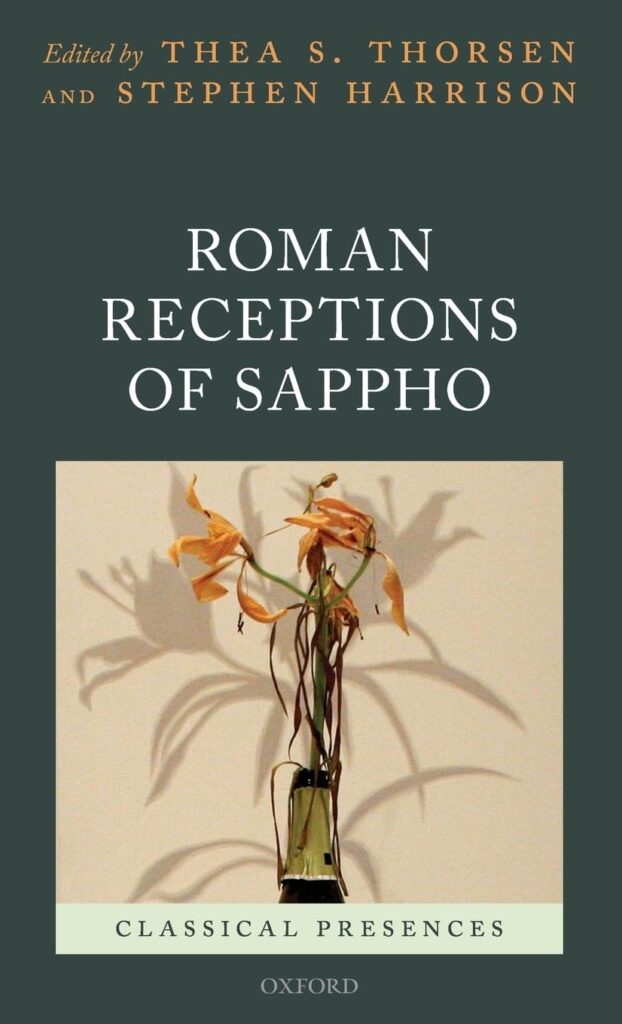
Our best hope, short of discovering further fragments, of adding to our Sappho is by consulting the Roman authors. In literature as in sculpture, almost as much of merit survives in Roman copies as in Greek originals. Roman Receptions of Sappho covers all this material exhaustively, and includes an extremely valuable collection of ancient texts referring to Sappho, in Latin and Greek, with good clear translations.
Sappho cast a long shadow over Roman literature, most especially over Catullus, who translated the famous “He seems to be a god . . .” (which we have in full in Greek) into Latin. This text illustrates the inevitable frustration of seeking Sappho in her echoes. First, we can only be sure it’s an echo if we have the Sappho text for comparison—in which case we probably don’t care about the echo as echo. Second, as in the Catullus poem, the poet has his own agenda, and is not interested in making what we would call a translation. Catullus chose this poem to express his jealous obsession with a woman he called Lesbia. He meant to dignify his own hapless passion by citing (as a good Roman would) a precedent, to wit, Sappho. But Catullus failed to grasp the catastrophic shyness Sappho expressed in this poem. Instead, he makes the poem about paralyzing jealousy.
Though they cannot be recommended as pure entertainment, both of these are admirable reference works, and go-to’s for the most up to date thinking and bibliography on Sappho, which will be indispensable for anyone who takes a professional interest in Greek, or Roman, poetry. They live up to the highest expectations one brings to the productions of the Oxford and Cambridge university presses.
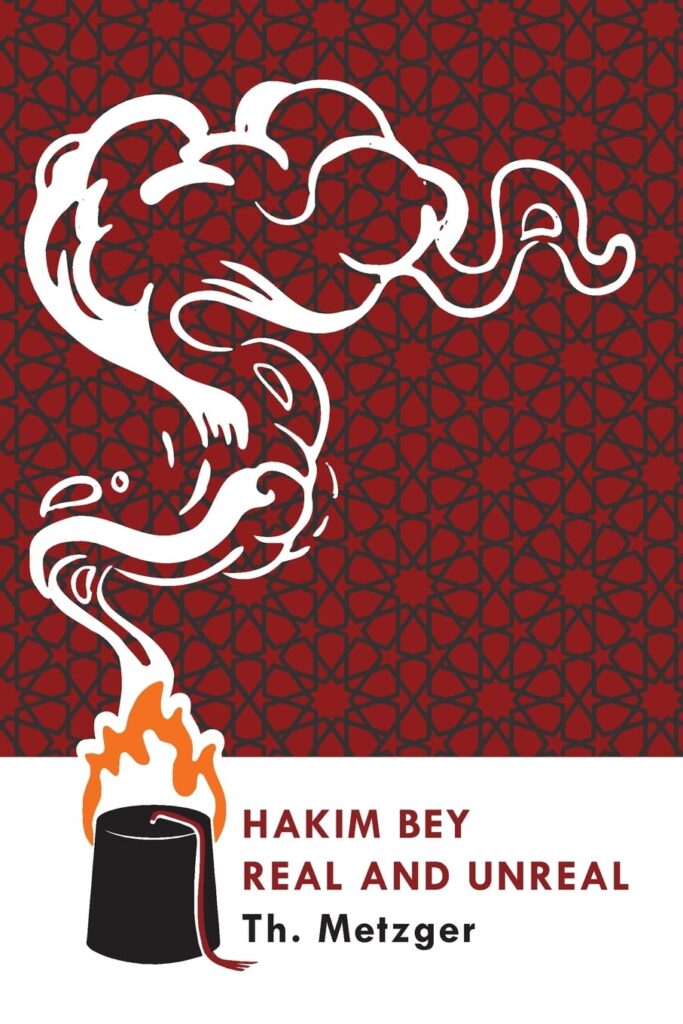
Th. Metzger, Hakim Bey, Real and Unreal, mogtus-sanlux 2023. 234 pages.
Hakim Bey, the pen-persona of Peter Lamborn Wilson, was a deliberately constructed character, which one might with equal justice call a brilliant creation of personal theater and a hoax. He himself didn’t know where the con ended and the art began. Scamming and the stage have this in common: the performance only succeeds insofar as the actor himself believes in it.
Thom Metzger is best known for his frenziedly poetic verbal surges. I once described him as “a disoriented archangel, soaring berserkly earthwards, on wings of pidgin English,” and I don’t think I can improve upon the formulation today. In this book, Thom brings his talents to bear on recreating the spell Hakim cast: a glimmering glamorous mix of genuine insights—and bogus self-serving syntheses. And Thom has succeeded to admiration, as far as was humanly possible. The only weak point are Hakim’s own writings, as cited in this book, which have not half the magic of Thom’s recreation.
Thom brings to the task more than literary genius. An accomplished antiquarian historian, he knew Hakim for more than a quarter century, and maintained the friendship through long and frequent visits, and indefatigable letter writing. Thom is thus well placed to offer a wealth of personal details otherwise unobtainable. For the afficionado of Hakim Bey, this book is a priceless historical document.
Far more so than Hakim’s literary legacy. This mainly consists of a flurry of grand polysyllables and allusions to political theories that fizzled almost as quickly as they flashed, back in the eighties. Many of his best phrases were pilfered, with a magpie’s eye for the shiny, from his friends’ conversation. The essence of his appeal was a unique ability to make slacking, tippling and puffing weed appear to be spiritual attainments and political acts.
In fairness, one must note that his travel writings, drawing on more than a decade in India and Iran, are of exceptional merit and interest. Also, a lifelong connoisseur of genre fiction, he wrote towards the end of his life a book of short stories of which any author might be proud. These real and substantial achievements, however, were not what won him his reputation.
Characters like Hakim recur through the history of avant-gardes. There’s Aleister Crowley in England whose esoteric impostures, lovingly chronicled by his somewhat masochistic acolytes, are not unknown in the anglophone world. Thom in fact notes this parallel in his chapter “Sorcerers.”
Another such is Edvard Munch’s mentor Hans Jaeger, ringleader of the Kristiana Bohemians whose advanced ideas brought about a young man’s suicide. And let’s not forget Peter Hille in turn of the century Berlin, who persuaded the great poet Else Lasker-Schüler that bearing his bastard, while still married to a long-suffering if unimaginative physician, was the liberating act of a noble soul.
Such persons are genius con-men, who often act as catalysts for real geniuses. Their role in society is almost like that of the ritual fool, the sacred clown whom the Sioux called heyoka, a principled contrarian who offers liberating insights into the hypocrisy of ordered society. That’s their role in an archaic society, and that’s the status their modern equivalents claim.
But the whole hierarchy of the sacred has degenerated in modern times. The priest has become an underpaid therapist, and our equivalent of the heyoka is a carny-conjurer like Anton Lavey—or Hakim Bey.
Hakim himself produced so little of real value because his best energies always went into seeming to. Still, if Hakim himself is rather like the hole at the center of a vinyl LP, we must acknowledge the sometimes stellar cast of persons he caused to revolve around him, and persuaded to variously pay for his dinners, digitize his manuscripts, and drive him hither and yon. Among his generous friends none were more talented than Metzger himself. Thus the best parts of this book are the glimpses it gives of Metzger’s own world, which Hakim’s eccentricities expanded, and the frequently beautiful passages describing Metzger’s intensely magical relation to the geography of New York State, to old movies, and the shoddy but shimmering trinkets of popular culture.
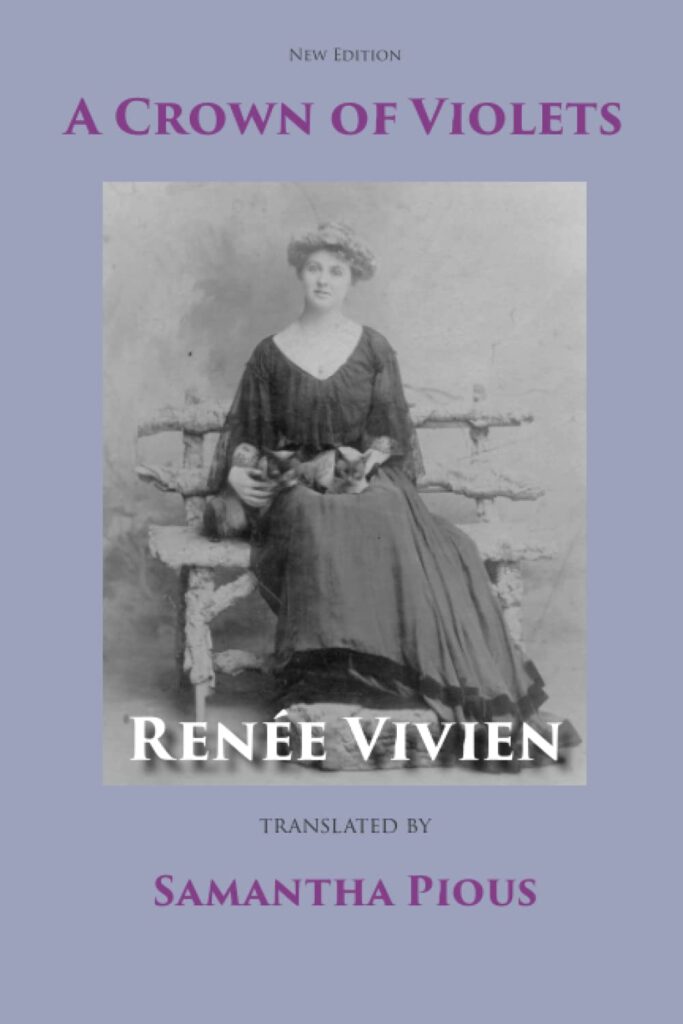
Samantha Pious, A Crown of Violets, poetry by Renée Vivien, translated by Smantha Pious. Headmistress Press 2015.
Renée Vivien is an undiscovered treasure. Despite her extraordinary literary gifts—if would be fair to call her the lesbian Baudelaire—she was sidelined because she wrote in a Symbolist style in the oughts of the last century, when Modernism had already claimed the field. Too, her bravely unambiguous expression of lesbian feeling counted against her, once Decadence was no longer the flavor-of-the-decade. Even so canny a considerer of lesbian history as Lillian Faderman, in her magisterial Chloe Plus Olivia, An Anthology of Lesbian Literature from the Seventeenth Century to the Present, relegates her to the category of “carnivorous flowers . . . exotic and evil lesbians,” accepting without question the Modernist bias.
But Vivien accomplished something extraordinary. She was the friend and lover of Natalie Barney, whose largely lesbian Paris salon was the literary counterpart of Gertrude Stein’s art coterie. Barney was the prototype of the lesbian salon hostess Valérie Seymor in Radclyffe Hall’s The Well of Loneliness. (If one has not read it, this, the most famous lesbian novel of the twentieth century, is well worth a look for its depiction of invert Paris before the first world war.) With Barney, Vivien undertook the ambitious project of constructing a gynocentric history and literature, attempting to realize the agenda she felt was implied in Sappho’s surviving poems.
Lesbians had been taken up as a literary theme many times before Vivien. Baudelaire wrote of them in shrill thrilled tones of bourgeois, Catholic horror. Verlaine wrote of them with smirky sympathy. Vivien owed nothing to these precedents, and created a new poetic topography of the lesbian sensibility.
Though Vivien often presents herself as a “virtuous pagan,” like the inhabitants of Dante’s limbo, she is in fact a through existentialist, in love with the death, for whom orgasm was an act of heroic defiance.
She created a veritable menagerie of quasi-mythological lesbian personae, from blood-thirsty amazons to cold-blooded serpent girls, lunar virgins and female octopi. Though this abbreviated glimpse of Vivien’s female fauna might suggest characters from comic books or B movies, they are actually fascinating explorations of female passions and physical predicaments. Hers are not the Vampirellas and Salaambos of male fantasy, but figurative psychological insights.
In A Crown of Violets, Pious has made a judicious selection from the sixteen very short books of poetry Vivien produced during the single decade of her literary life. Pious has arranged the poems more or less thematically: erotic love, the tension between the lesbian and straight society, diary-like poems, and finally those most directly influenced by Sappho.
Pious’ decision to translate Renée Vivien’s poetry in rhyme and meter gave me pause. Translating poetry is at least as hard as threading a needle. Doing so in rhyme and meter is like trying to thread that needle under water. The only people I’ve seen reliably succeed at this are Dryden, Pope, and more recently Roz Kaveney in her Catullus. Their success depended on a willingness to be fairly free in how they rendered, often sacrificing the sense of the poem in order to convey its spirit.
Pious set herself a truly impossible task. She undertook to convey with academic accuracy what was there, and to do so in the most demanding and unforgiving of forms. One marvels that she so often succeeded to admiration.
Happily, the French text is provided on the facing page, and for those who can access it, some of the best pleasures of this book are seeing how Pious has solved the riddles of Vivien’s more delphic lines, and how she has made the translation an intelligent and insightful commentary on the text.
At present this is the unrivalled translation of Vivien. The other attempts in English, Porter & Kroger’s in 1982 The Muse of the Violetsand Melanie Davis 2023 Etudes and Preludes do not, to my mind, present any serious challenge.
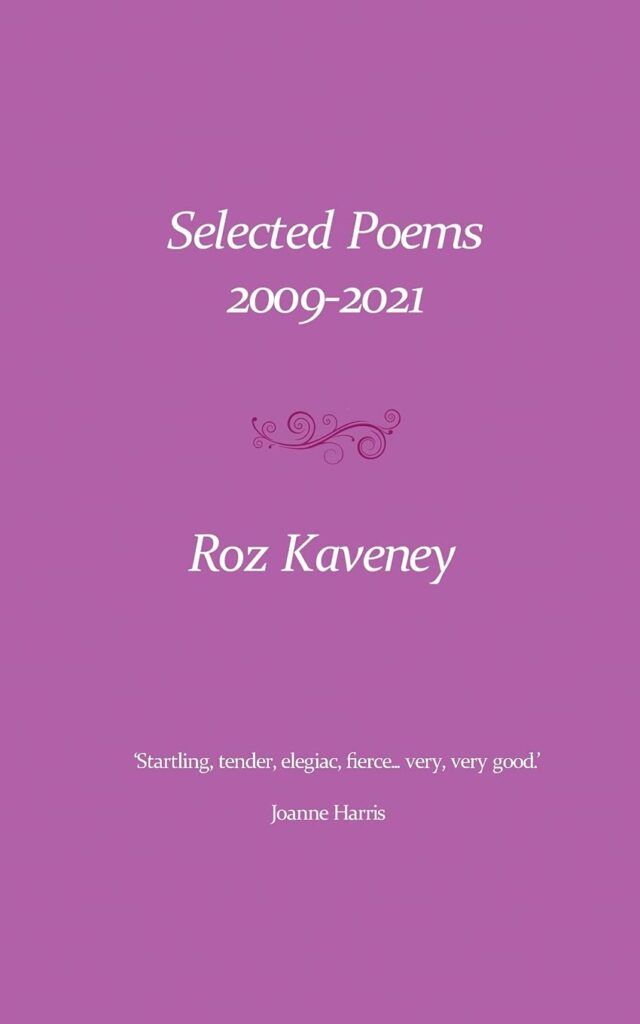
Roz Kaveney, Selected Poems, Team Angelica 2022
Roz Kaveney is known in SF circles as a core member of the Midnight Rose group—of which Neil Gaiman is the best known member. These authors which put out a number of “shared world” anthologies in the early nineties, through Penguin’s Roc imprint. Kaveney has also published numerous essays on pop culture themes such as Buffy the Vampire Slayer. Since transitioning in the early seventies, Kaveney has been a vocal and vital figure in the British feminist, queer and trans activism. She has written several volumes of a less usual fantasy series, Rhapsody of Blood, which Kaveney proudly proclaims is longer than Lord of the Rings. It is an astonishingly light and engaging read, contrary to what one expects of such a monumental opus. The focus is, not surprisingly, on the strong female leads, and the tone is light and witty, close in spirit to Stephen Brust, or to Tanith Lee at her most charmingly playful. Kaveney brings an Oxford education, a wit razor-sharp and mirror-bright, and a trans perspective, to bear on the world of SF/Fantasy—with fascinating results. Even more surprising than the sheer fun of her productions is the fact that so few have heard of her.
Even this outline of her oeuvre, so broadly sketched “that he may run that readeth it” is a bit overwhelming. But here I can consider only one of her books, the Selected Poems. Kaveney retired from poetry in her twenties, and didn’t take up the lyre again until age fifty, in 1999. Among the many remarkable productions here, the most startling are the renderings of Sappho. (Kaveney also published, in 2018, a complete Catullus, but only one of that Roman’s poems made it into the Selected.)
eThere are a number of excellent Sappho translations out there, as noted above, but Kaveney’s renderings are the only ones to date that hold up as literature. Kaveney’s translations are original compositions that take careful account of the content of the original. Here we may quote Dryden, who made the yet unparalleled English-language translation of the Aeneid.
Where I have taken away some of the original authors’ Expressions, and cut them shorter, it may possibly be on this consideration, that what was beautiful in the Greek or Latin, would not appear so shining in the English; and where I have enlarged them, I desire the false Critics would not always think that those thoughts are wholly mine, but that either they are secretly in the Poet, or may be fairly deduced from him; or at least, if both those considerations should fail, that my own is of a piece with his, and that if he were living, and an Englishman, they are such as he would probably have written.
Kaveney is somewhat freer than Dryden, who was after all an exemplar of classical polish and order. In many ways Dryden leads us from the baroque world of Milton to the lapidary perfection of England’s Augustan age.
Like Dryden, Kaveney is a real poet. While pettifogging pedants will take exception to some sacrifice of fine detail, the towering truth that overshadows the whole debate is this: Sappho wrote real poetry. If the translation, however accurate it be, isn’t real poetry, then it isn’t really Sappho.
A few of Kaveney’s Sappho poems appear in this issue.
As to Kaveney’s style, the closest parallel in English is Donne. She has a kindred eloquent force and elliptical syntax. The texture of the poems is gnarled, distorted, twisted, rugged, like a Chinese scholar’s rock. Not infrequently she comes as close as I have ever seen to writing English so it sounds like Chinese. These lines from Sappho on Old Age (given in full in this issue) are a case in point:
Dance. Sing. Enjoy young bodies. Let the Muse
Infuse your song the weaving of each arm
Slow dance wind saplings leaves. I once had charm
Who now have age and wisdom and white hair
Chinese has no endings on nouns that indicate relations (like who (subject), whom (object), whose (possessive). Nor do the verbs change form to indicate who does the action (run; runs) or when (run; ran). To make matters more perplexing, Chinese is quite stingy with its propositions. In Chinese poetry one must almost always infer how the words relate to one another.
Thus the line “Slow dance wind saplings leaves” is structurally perfect Chinese—with better success, and none of the cringe-worthy condescension we find in the “Asiatic” style adopted at times by Ezra Pound or Gary Snyder. But then Kaveney wasn’t attempting “yellow-face.” The startling verbal turns that are hers come by way of Donne.
Kaveney is of course magnificent in her poetic accounts of the underworld of transgender libertinage, prostitution and drugs, a world she fetchingly described in her faintly fictionalized 2015 memoir Tiny Pieces of Skull. This was written in a breezy, sparkling style. In the poems, addressing the same themes, she opens her heart with riveting authenticity.
Kaveney’s selected poems is a kaleidoscope of insights and experiences, interweaving the outlaw world of transgender in the seventies with correct and unpretentious references to intellectual alternate universes inhabited by the likes of Richard Dadd and Inanna. A book to delight the intelligent, and for friends a rare and precious gift.